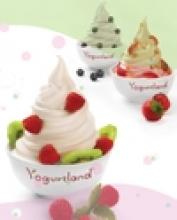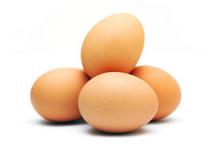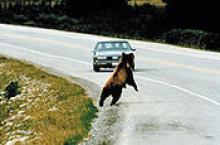I love cultural anthropology. Analyzing the way widespread behaviors form is fascinating and it's not surprising that much of what we know today as "culture" initially formed as a response to needs and desires related to food. Thinking about the things we eat and, more importantly, how we prepare them leads to a baffling sense of surface-level absurdity. We go to such great lengths to make our food that it seems almost random. Of course, no innovation is meaningless. In the end, even the most elaborate food preparations stem from the same thought process: Problem and Solution.
Take sausage, for instance. Sausage is nothing if not a series of problems that need to be solved. Problem #1: I have all of these leftover bits of meat that, on their own, just aren't palatable. They're tough, coarse or just don't taste very good. I don't just want to throw them away, so what do I do? Well, let's grind them all together to alleviate the toughness and coarseness, then hit them with a bunch of herbs and spices to make them taste good. Problem #2: Now that I've ground everything up, it's loose and difficult to cook. So, I'll throw everything in an edible casing so it'll cook evenly. Voila! Sausage.
I know that it had to take a lot of trial and error to come up with the proper procedure for sausage-making, but you get the point. Still, not all innovative foods are the result of inconveniences. My favorite ingenious food is, by far, bread.
Thinking about the bread-making process, it's seems pretty silly to go through all of that messing around for something so simple. But when I think of bread, I think of stubborn early humans who came to the concept of bread in stages.
Grain has been a staple of the human diet for a very long time now, but the fact is that grain on its own barely even qualifies as food. Take wheat, for example. A kernel of wheat isn't exactly a casual snack. It's hard, it's bland, it may even have some bitter compounds lurking in its shell. If I were a prehistoric man who really wanted to eat grain, the first problem I'd solve would be the hardness. I'm tired of breaking my teeth on grain, so why not grind it up before I eat it? Simple enough. Grain + Rock = Dinner.
Yeah, still pretty tough stuff. Even if I grind it down into a powder, grain's still dry and not very tasty. Water's wet, so let's slop on some water and make my grain meal into a paste. Yeah, okay, still not very good, but we're making progress.
Now, for a time, prehistoric humans left grain meal as it was, but they didn't usually mix it with water. As they began to domesticate cattle, they found that they could stretch their bovine food supply by holding off the slaughter and relying on blood instead. It sounds gross now, but blood was a significant part of the human diet for a long time. Early cattle herders would mix cow's blood with grain meal for a high-carb, high-protein dish that would have sustained them through some of the rougher parts of the year.
But my prehistoric man isn't satisfied with moistened grain meal. He and the rest of his tribe have stumbled across the benefits imparted to food by fire. Whether by accident or just sheer curiosity, people started heating their foods to favorable results. As Paleolithic Foodie has discovered, wet grain meal slop isn't exactly conducive to impaling upon a twig and roasting over a fire. What he can do with it is plop it down on a hot rock for a spell. After some experimentation (and a few burned flatbreads), Paleolithic Foodie has created a tasty treat that will end up changing the way people eat and live forever.
I don't know if it went exactly like that, but I couldn't be too far off. Modern scientists have been observing non-human primates for a century now as a window into the earliest stages of human culture. Some of the most fascinating studies have come out of Japan, like when Dr. Syunzo Kawamaru observed a troop of macaques start washing the sand off their food when one of their own "invented" the innovation in 1954. Only this one troop demonstrated the food-washing behavior, indicating that it wasn't an instinct, but a behavioral development stemming from the ingenuity of an individual.
Food is fascinating like that. It's a subject at the heart (or stomach) of cultural evolution. Studying the way we and our closest genetic relatives approach food-centered problems is not only relevant to culinary practices, but to the history of thought itself.








